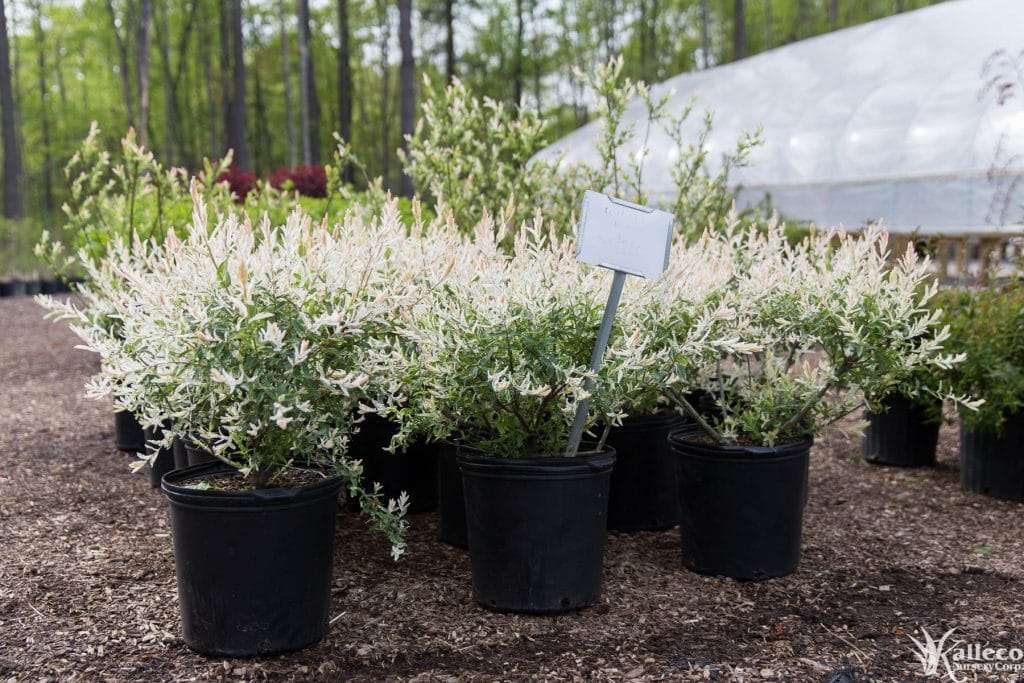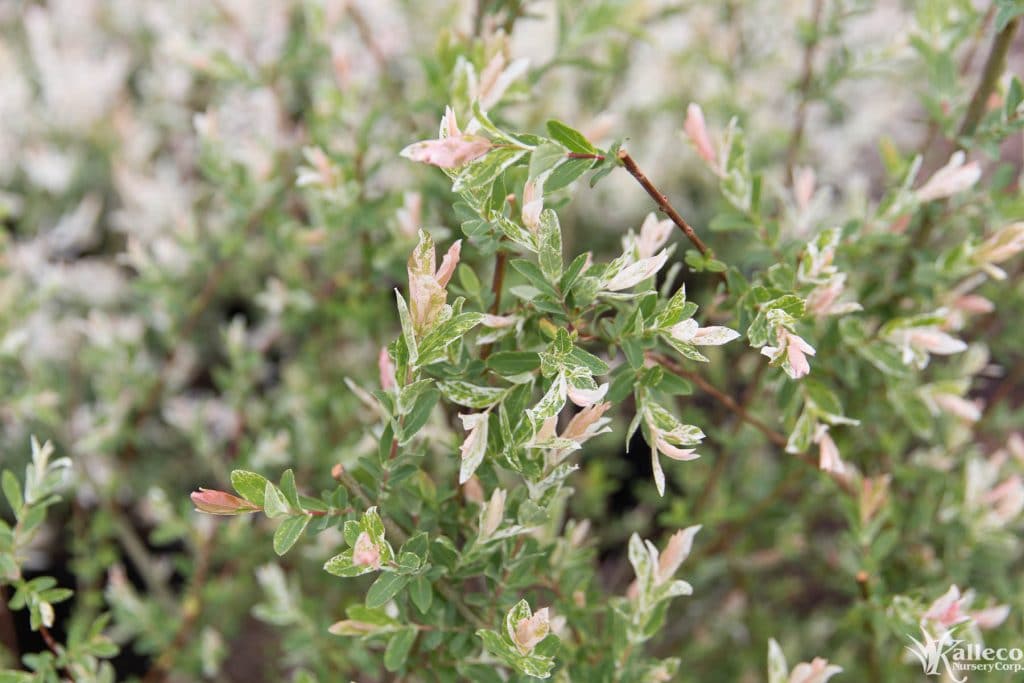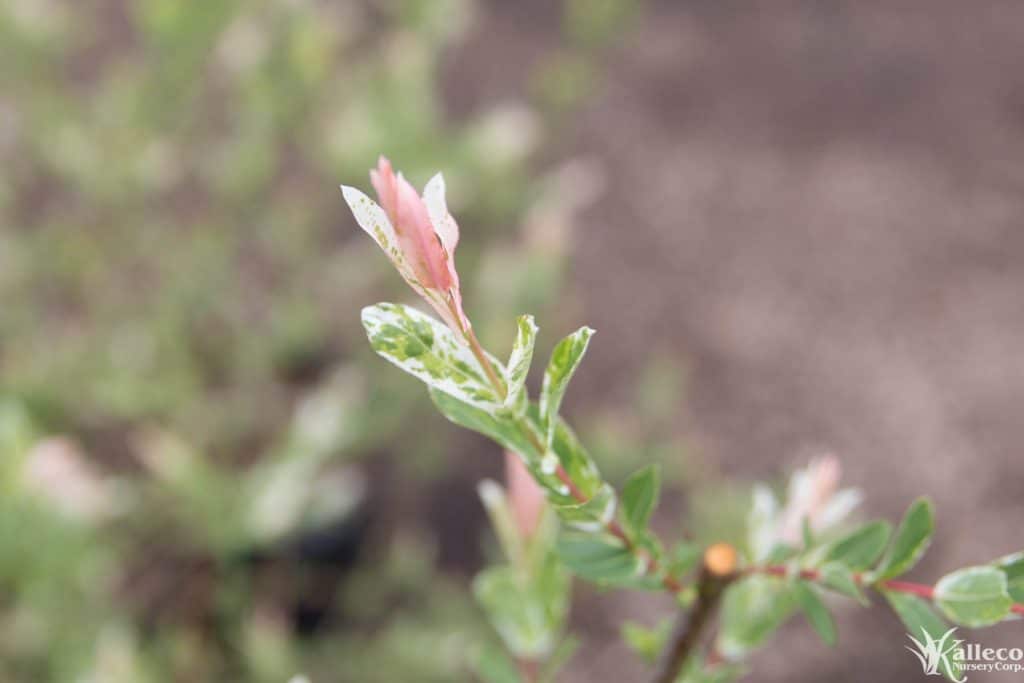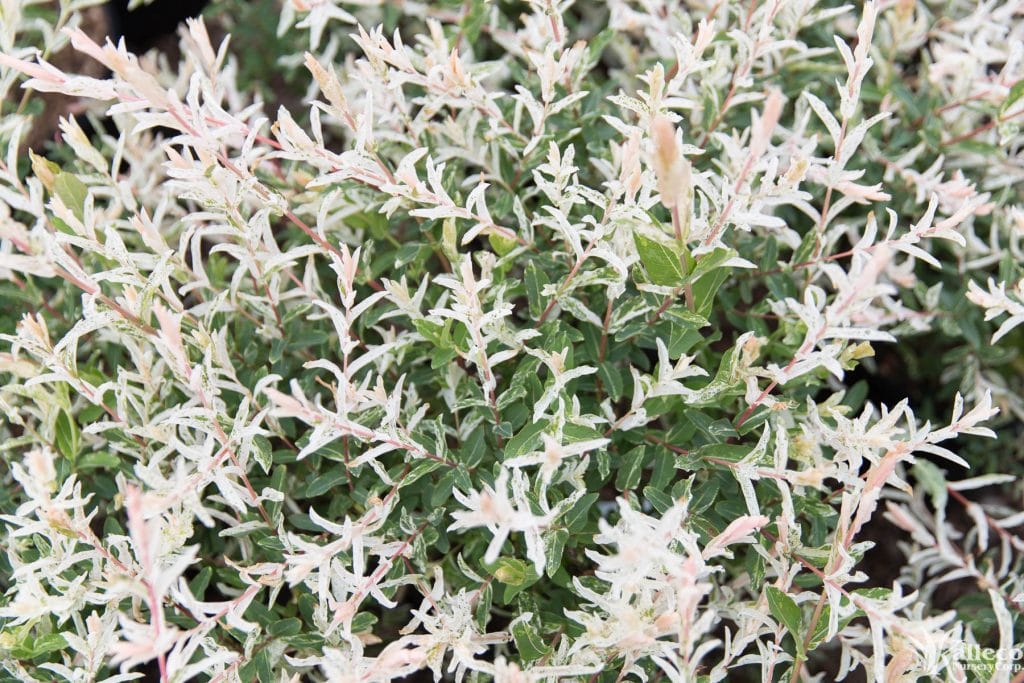Salix Integra ‘Hakuro Nishiki’
Common Names: Tri-color Willow, Dappled Willow, Variegated Willow
Description: Tri-Color Willow is a deciduous shrub with long stems and delicate, narrow leaves. New growth in the spring is soft pink, and regular leaves are mottled and vary from pale green and yellow to white. In the fall, it sheds yellow leaves to reveal bright red twigs.
Planting and Growth: As with any deciduous shrub, the tri-color willow should be planted in the spring or fall. This shrub loves full sun, but prefers moist soil. Once installed, the shrubs should be watered deeply immediately. During the spring and summer, water once a week if rainfall is less than one inch. While the tri-color is fairly hardy and able to withstand mild droughts, it should be watered regularly to maintain optimal health. However, a well-established specimen will hold leaves through early freezes.
Once established, tri-color willows grow quickly, up to 7’-9’ feet tall and wide. Regular pruning should be performed to maintain a smaller shape, ideally after new growth in the spring. The fast growth habit means it does best with plenty of space to spread out. Tri-color willows are also ideal for hedges and barriers due to their height and wide growing habit. The pace of their growth means you can expect a full hedge or barrier in the first few growing seasons.
Special Features: Disease-resistant; fast growing; full sun; tall specimen; great for wet area plantings; great for hedges or barriers; late fall interest.
Complements: Low-growing, moisture-loving perennials like irises, ferns and some grasses. Complement the pale green leaves with purple and pink flowering shrubs like hydrangea or lilac. Nursery Manager Meghan likes them as a tall specimen in foundation beds and gardens. It also makes a great addition on house corner beds and in rain gardens.
Related Plants: Willow trees.
- Detail of new growth and dappled leaves.
- Detail of new pink leaves.
- A more mature specimen at the nursery.
- Detail of new growth and mature leaves.
Need more planting advice? Let us know!









